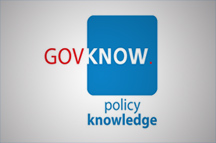The Government recently reported that young people from the most disadvantaged areas are now seven times less likely to participate in higher education than their counterparts in advantaged areas. As higher education becomes progressively more necessary to succeed, and inequality in the UK grows, it is more important than ever to increase participation in post-compulsory education.
Reducing barriers to higher education is a priority: targeting the financial burden of higher education for disadvantaged students, as well as making more support resources available to young people seeking to further their education needs to be at the forefront of higher educational goals. To meet these needs HEFCE and OFFA will play a substantial role. HEFCE’s development of a National Strategy for Access and Student Success will set the standard for the course that must be taken to increase participation in higher education. It is also necessary to further analyse regional discrepancies in participation, which can be done with their POLAR programme. Additionally, financing assistance and options for students are ever more important in today’s economy.
While the government will have a significant role to play in higher educational policy reforms, the universities and other institutions will also need to take further initiative to extend higher education to disadvantaged students. Programmes such as Realising Opportunities, which provide support and resources throughout the application process, are increasingly important. Options that give disadvantaged students supplementary knowledge to begin study for advanced professions, such as that provided by the Royal Veterinary College Gateway Programme, will help to close the gap between the most advantaged and the most disadvantaged students.
In light of these issues, the Policy Knowledge briefing on widening participation in higher education will provide delegates with the opportunity to hear from the leading authorities and experts in extending opportunities in higher education to the most disadvantaged students and how to decrease the gap between the advantaged and disadvantaged youth in pursuing higher education.












